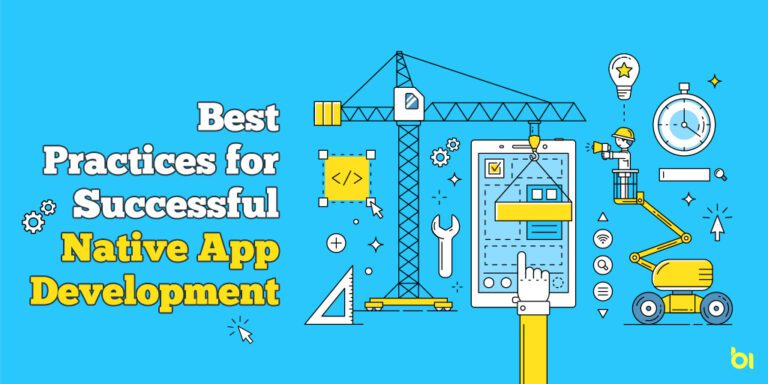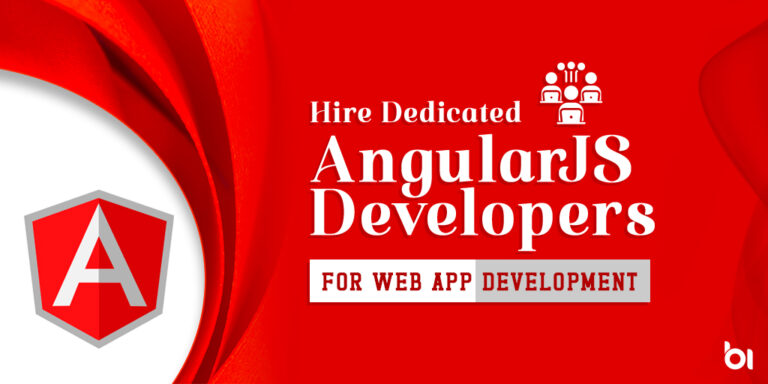When we talk about Native App Development, it refers to a set of mobile applications that are developed by the native API’s of the device. This includes the iOS and Android platforms.
With the rise of hybrid applications, Native apps have begun to disappear from popularity. But for some, apps are still the best way to go for a product or a brand.
However, with the increasing adoption of mobile browsers, and the shift of users to smartphones from dedicated apps, Native applications are still the way to go. This isn’t the only advantage of native apps.
Here’s a comprehensive list of best practices for successful Native app development
1. Don’t skimp on app store optimization
Since Native apps are native to the platform, you must optimize your app for a specific device. An example can be seen in the case of the iPhone and iPhone X.
Both the devices are on the iPhone platform, but both look different, and feature the same OS, but differently.
So, it is advisable to optimize your app in accordance towithhe device it is going to be installed. This is how it is different from hybrid apps.
Don’t leave important information, such as a call-to-action button, as it will not appear properly on the smaller screens of the smaller devices. Also, don’t assume that the larger screens will display the same information.
2. Don’t assume that Android devices will use the same layout as the iPhone
As there are a lot of different devices and screen sizes to think of, be sure to optimize your layouts, especially if it is a Native application. The layouts may look fine on larger screens, but may not look good on smaller screens.
Similarly, for the iPad and iPad mini, the app must be optimized for smaller screens and the split-screen view as well.
Read Also: 10 Python Development Trends in 2022 and Beyond
3. Design your app using the latest technology
If you are developing a Native application, you must follow the latest design standards of the app. While the design standards haven’t changed since Apple introduced the new iPhone 8, the UI elements, the colors, and the layout must be updated.
As this will change as the app is being tested on different devices, as and when it comes out of beta.
4. Understand the pros and cons of native development
Since the apps are native to the respective platforms, you must understand the pros and cons. Do you know why you need native apps? Is your app being designed only because you can customize it to suit your brand or product? Don’t make this mistake.
If you are building a Native app for marketing purposes, you must look at the performance of the application. Does it perform as well as any website? If yes, then you can go ahead. Otherwise, you may end up as the reason why websites are performing better than mobile apps.
5. Use the right technologies
When you develop an app, you must know what you want to achieve with your app. Before you get too focused on the technology, you must define your use case.
For example, are you building an iOS app for social media? Do you want it to be cross-platform? Is it an easy-to-navigate app? All these questions will help you decide what technology you must use.
Read Also: 10 Tips to Outsource Best App Developers for Start-Ups
6. Understand the basics of iOS development
If you have developed a Hybrid app, it might have looked like a native app, but the logic behind it may not have been native. You may have implemented your app using some logic in HTML5.
In some cases, the app may even be built using frameworks such as React Native. There are many frameworks available for Native and hybrid apps.
You must know what each of them offers and decide for yourself.
7. Use responsive design
This is one of the most basic things to do in the entire development process. Every app should be optimized to fit different devices.
With the latest technologies, your app will support multiple devices and screens. This means that your app is not just optimized for iOS devices, but all screens. If your app is not responsive, the experience may not be that great.
Also, it is advisable to use a design framework like Ionic or React Native. This will help you in creating an app that is compatible with any screen size.
8. Build apps that are intuitive
If you have worked with hybrid apps, then you must have understood how apps work. They are made to work on every screen. So, if they are not compatible, they will definitely not work well.
A native app will have a different look and feel, but when it comes to usability, it should not be any different from a hybrid app.
9. Understand the latest trends
The native and hybrid applications both have their own advantages and disadvantages. With the increasing numbers of mobile devices, apps are moving towards the Web.
Hybrid apps have made developers lazy and there are very few companies that build apps for both platforms. Also, there are fewer app stores, and more restrictions on the types of apps that are being sold.
So, what do we expect from native apps?
We expect apps that provide the best user experience for users. Also, they must be built with the latest technology, and must use the latest industry standards.
In this day and age, native apps are the way to go. There will always be exceptions, and it will always be up to you to decide what is best for your company.
Read Also: How to Reduce App Development Cost: Best Practices, Tools & Pro Tips
10. Use the right platforms
Native apps are developed for a specific platform. This includes the iOS and Android platforms. This will help in improving the performance, and in making sure that all apps are compatible with each other.
The reason why native apps are the best is because they work with the underlying system, and are much better at delivering the performance. They work to the OS, and are built with each other.
You should try to use the right platform for the best user experience. The platforms may also be different, which makes them very much in demand.
Also, there are plenty of other platforms out there, such as WebView. This allows developers to build apps for any platform. However, this comes with its own disadvantages, like limited memory usage, and it is not supported by many browsers.
11. Understand the technology
If you have developed a Hybrid app, then you must have used the best frameworks and technologies that are available.
You must have developed your app based on the needs of the users, and based on what you want to achieve. You may have decided to develop a WebView app. Do you know the advantages and disadvantages?
Also, be sure to understand that a Native app has its own set of best practices. You must understand the tools, the processes, and the limitations.
12. Use the right frameworks and best practices
For most of the developers, building apps is a lot of fun. You can even build a hybrid app using the same technology, but the Native app has some benefits, such as faster development, and better user experience.
However, not all developers know how to use the tools correctly, or even how to use them.
Read Also: Mobile App Development for Start-ups | Binary Informatics
13. Understand the process
When it comes to building Native apps, there are always two ways to develop an app. The traditional way is to build the app using HTML and CSS, and then adding some JavaScript for interacting with the device.
It is an easy way to build any app. However, while it is easier to understand, the code is not as clean, and not as optimized. Also, it doesn’t provide the best user experience.
The other option is to build your app using Native APIs, by integrating some libraries into the native application. This method is much cleaner, and much easier to optimize. Also, it gives your app the best performance, and provides the best user experience.
As these are both ways of building apps, you must understand the best practices.
14. Understand the limitations of Native Apps
While hybrid apps are also considered native apps, they are built using some technology that makes them compatible with both platforms. They use the HTML5 and CSS, and JavaScript. These apps don’t have to build a lot of Native functionality.
The apps can be built using WebView, and will work on all platforms. This may help you to build an app that is very similar to a Hybrid app, but without all the limitations.
You can also use some of the other languages like Swift and Java to develop Native apps. This allows you to build the perfect app for your business.
You should use the right development tools and best practices, so that your app has the best user experience.
15. Use the right development tools
You should know that your app will have different functions, and you should understand how they work. Therefore, you will need to understand the different technology.
If you use the wrong tools, then you will waste a lot of time. You must develop an app in a way that is compatible with the best technologies.
Also, you must understand how to make changes in the code, so that it can support all the features and functions that you are planning.
Now that you have learned all these things, you must start building apps. Make sure that your apps are developed the best way possible. After all, you will have to get a lot of money, to build these apps.
Conclusion
Building an app can be a fun process, but there are certain things that you need to think about before you start developing your app and You must understand how the app should work, so that you can get the best user experience for your users.
Also, You must understand how the best technology can help you to achieve success. You must also make sure that your apps are compatible with the different operating systems.
You can develop an app that is compatible with multiple platforms, if you learn the technology well. Also, you should make sure that you know the different best practices.
Not Having the Good App Development Company
Binary Informatics is a top Native app development company in India which offers end-to-end Native app development services. As a result, we use the best practices to design and develop Native mobile app to bring a significant return on your investment.
We have experts who specialize in Native App development service and we deliver the best results at the best prices for you.
Having the right mobile app developers is such a blessing. Startups usually don’t pay too much attention when hiring an app developer, but that can turn into a mistake.
Finding and choosing a good app development company involves steps like portfolio analysis, asking important questions. Before hiring an app developer, check reviews from previous clients and discuss their work experience in detail.
If you wish to learn more about application development standard best practices then contact our team of developers at Binary Informatics.




